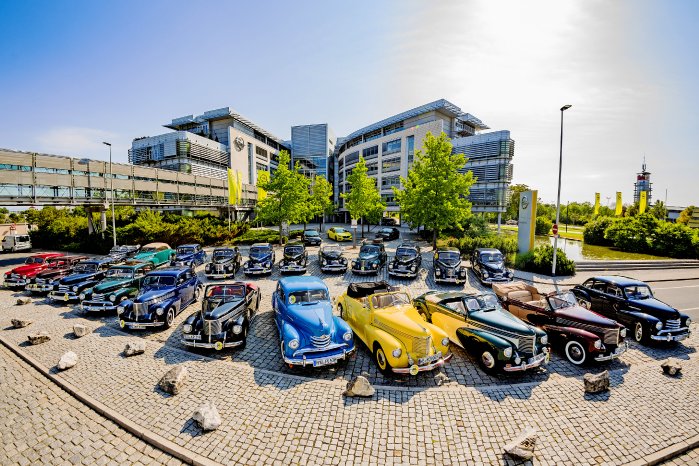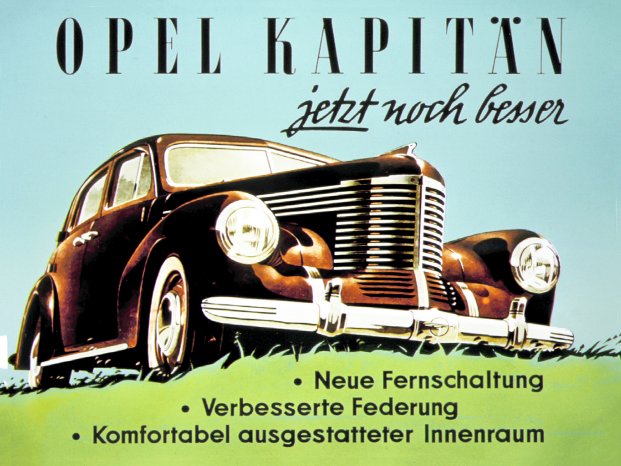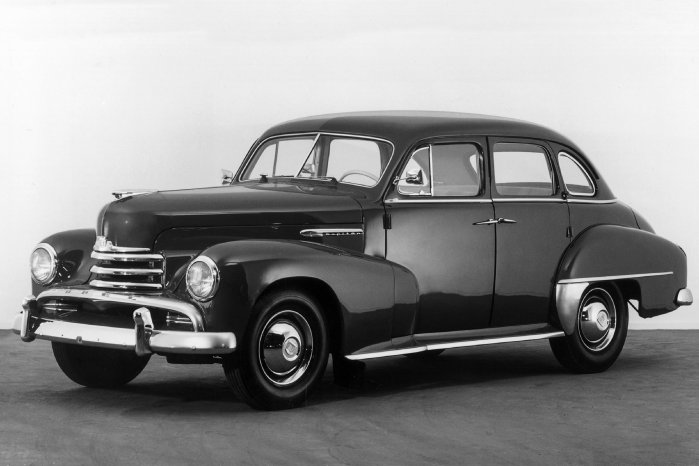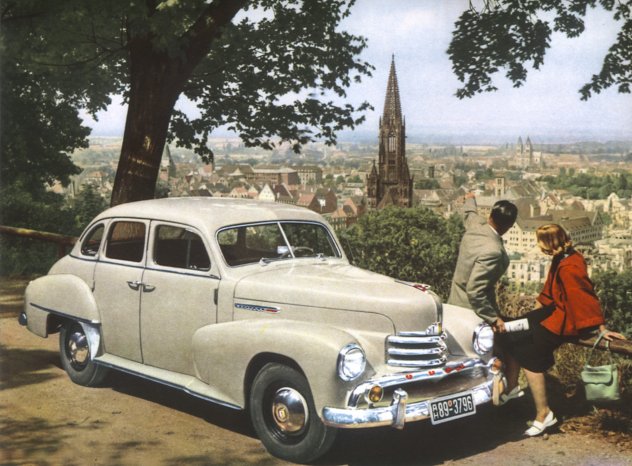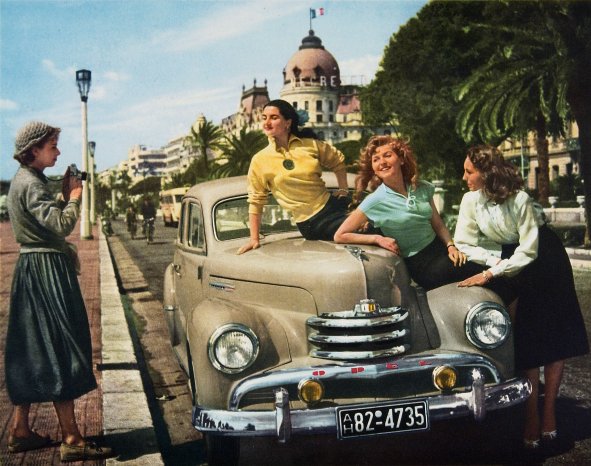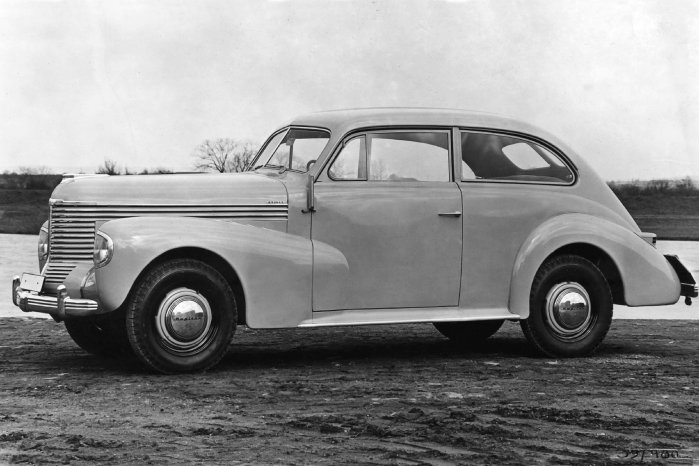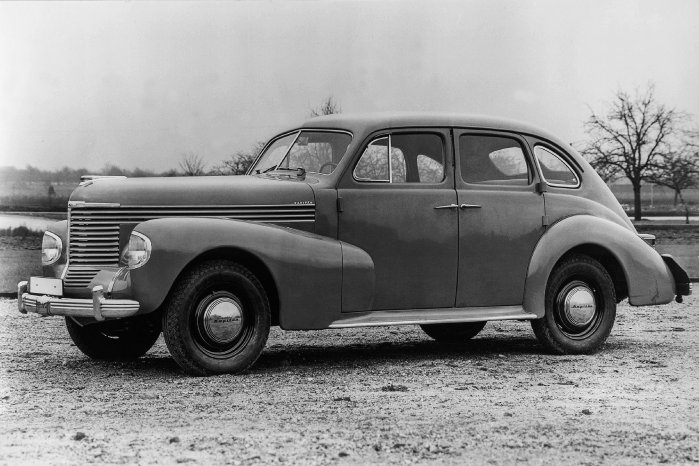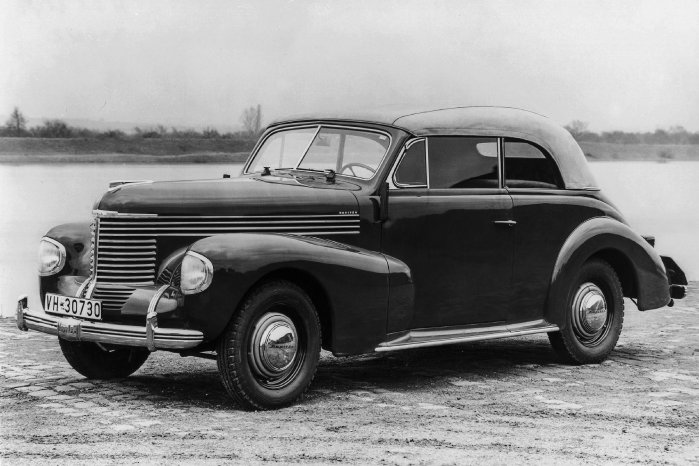- Major milestone: Opel Kapitän celebrates big birthday
- Don’t miss it: 25 Kapitän cars on jubilee tour from Rüsselsheim to Darmstadt
- Rich tradition: Current flagship Opel Insignia among the well-wishers
80 years ago: The birth of the Opel Kapitän
One year after the introduction of the Admiral, Opel expands its model portfolio with another size class. As a member of the upper mid-size class, from 1938 the Opel Kapitän takes its position between the popular Kadett and the stately upper-class Admiral in art deco style. With its integral all-steel body and modern drivetrain technology, the Kapitän is offered as a two and four-door limousine as well as a four-seat convertible, and takes on a pioneering technological role in this vehicle class. The innovative 2.5-litre, 55 hp, six-cylinder in-line, overhead-valve engine becomes the hallmark of the large Opel model.
Ten years later in 1948, the first post-war Kapitän leaves the factory in Rüsselsheim and still corresponds to the original model except for a few details. With its American design language and six-cylinder comfort, the Opel Kapitän then becomes synonymous with progress, prosperity and reliability during the economic miracle. Opel the reliable! In the 1960s, the top model from Rüsselsheim is one of the best-selling six-cylinder cars in Germany. It was not until the spring of 1970 that production of the successful six-cylinder model came to an end with the Kapitän B, at the time the entry-level model of the Opel upper-class family consisting of the Kapitän, Admiral and Diplomat. The long success story of the most famous large Opel comes to an end after 42 years and 474,189 units.
Pre-war period: Taking off with innovations
In 1938 the new Opel Kapitän incorporates the technological expertise of Adam Opel AG. This includes advanced engine technology and a modern body design. The production-installation at the Rüsselsheim headquarters cost ten million reichsmarks. The 2.5-litre, six-cylinder in-line unit, an "autobahn-proof short-stroke engine" whose overhead valves are operated via a spur gear-driven camshaft, pushrods and rocker arms, delivers 55 hp and accelerates the Kapitän to a top speed of 126 km/h. In addition, the Kapitän is the first model in its vehicle class in Germany to have an integral all-steel body without a frame – a construction principle that is still valid today.
Independent wheel suspension with front stabiliser, hydraulic brakes and shock absorbers are standard, but far from a matter of course in automotive engineering in 1938. The modern form with hexagonal headlights integrated in the mudguards for the first time, a one-piece "alligator" bonnet opening upwards and hatchback-like rear with a boot accessible from outside, follows the stylistic role models of the vehicles from the USA.
"A car that belongs to the world", is how Opel advertises its new mid-size class model, which is offered as a two and four-door limousine as well as a two-door convertible with four seats and turns into an export bestseller. By the time production ceases due to the war, 25,374 units of the Kapitän – including 4,563 convertibles and 248 chassis without bodywork – had been built in just under nine months. Of these, around 13,000 vehicles were delivered abroad.
A new beginning: Back on the road to success
On July 5, 1946, post-war production begins in Rüsselsheim and the Kapitän is also again built from October 1948. The first major order is placed by the US government. From 1949, Opel again supplies export markets. 13,036 units of the new Kapitän are produced until the spring of 1950.
In May 1950 the company announces "New features of the Opel Kapitän": the Kapitän, now available exclusively as a four-door limousine, differs from the pre-war model with its modern steering column gearshift, restyled interior and round headlights. In 1951, the Kapitän's body undergoes further changes: the lines are more refined, the boot is larger and the more generous use of chrome reflects the zeitgeist of a new dawn and the beginning of prosperity.
The new 58 hp six-cylinder engine, which is also used in the Opel Blitz truck and guarantees it a special position in the light commercial vehicle market, no longer requires any running-in. The Kapitän's original shape is preserved until 1953, when the successor (Kapitän '54) is introduced with more power and a modern pontoon form.
Today: The Insignia continues the tradition of the large Opel models
Opel already presented advanced, comfortable and powerful cars that were affordable back with the successful Kapitän models. The Rüsselsheim-based manufacturer remains true to this principle today. In the 1950s and 60s the Kapitän took on the role of a real flagship; today this is the current Opel Insignia. The Insignia Grand Sport, Sports Tourer, Country Tourer and GSi models offer a range of intelligent technologies unrivalled in this segment. This range extends from trend-setting Opel IntelliLux LED® matrix lights and the ultra-modern all-wheel drive system with torque vectoring, to state-of-the-art driver assistance systems and the head up display. In addition, there is first-class connectivity with smartphone integration typical of Opel models. All in all, the Insignia impresses with high agility and driving precision, plenty of space with a sporty, elegant design and an excellent price-performance ratio –a car to be reckoned with, even for premium brand models.
